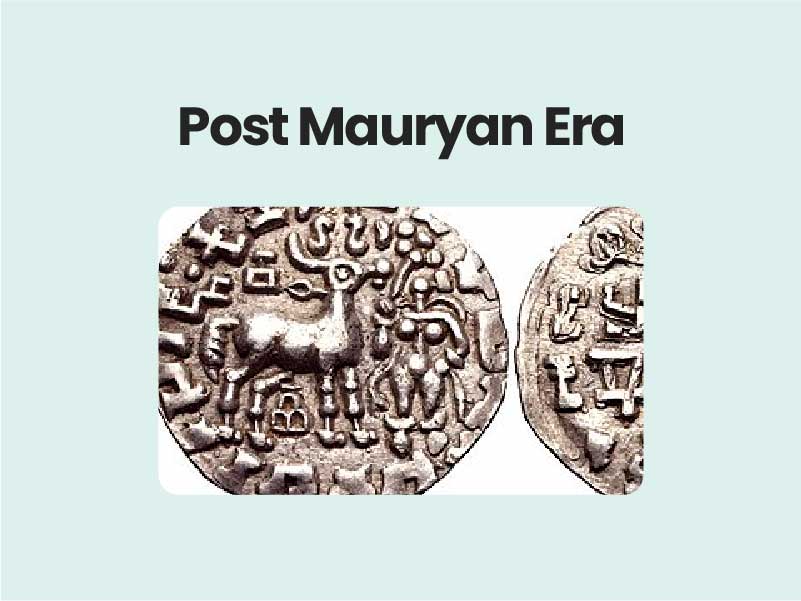Companion@360 → 7 Month programme to sharpen your writing skills → REGISTER NOW

Sangam Polity
- Hereditary monarchy
- king had also taken the advice of his ministers
- court-poet and the imperial court or avai.
- Chera kings assumed titles like Vanavaramban, Vanavan, Kuttuvan, Irumporai and Villavar, the Chola kings like Senni, Valavan and Killi and the Pandya kings Thennavar and Minavar.
- Each of the Sangam dynasties had a royal emblem – carp for the Pandyas, tiger for the Cholas and bow for the Cheras.
- . The king was assisted by a large body of officials who were divided into five councils. They were ministers (amaichar), priests (anthanar), military commanders (senapathi), envoys (thuthar) and spies (orrar).
- Each ruler had a regular army and their respective Kodimaram (tutelary tree).
- Land revenue was the chief source of state’s income while custom duty was also imposed on foreign trade. T
- Pattinappalai refers to the custom officials employed in the seaport of Puhar.
- Booty captured in wars was also a major income to the royal treasury
- Roads and highways were well maintained and guarded night and day to prevent robbery and smuggling
Sangam Society
- Tolkappiyam refers to the five-fold division of lands –
- Kurinji (hilly tracks), Mullai (pastoral), Marudam (agricultural), Neydal (coastal) and Palai (desert).
- people living in these five divisions had their respective chief occupations as well as gods for worship
- Kurinji – chief deity was Murugan – chief occupation, hunting and honey collection.
- Mullai – chief deity Mayon (Vishnu) – chief occupation, cattle-rearing and dealing with dairy products
- Marudam – chief deity Indira – chief occupation, agriculture.
- Neydal – chief deity Varunan – chief occupation fishing and salt manufacturing.
- Palai – chief deity Korravai – chief occupation robbery
- Tolkappiyam also refers to four castes namely arasar, anthanar, vanigar and vellalar
- the ruling class was called Arasar.
- Anthanars played a significant role in the Sangam polity and religion.
- Vanigars carried on trade and commerce
- vellalas were agriculturists
- Other tribal groups like Parathavar, Panar, Eyinar, Kadambar, Maravar and Pulaiyar were also found in the Sangam society. Ancient primitive tribes like Thodas, Irulas, Nagas and Vedars lived in this period
View this post on Instagram
Religion
- the primary deity of the Sangam period was Seyon or Murugan, who is hailed as Tamil God
- He was honoured with six abodes known as Arupadai Veedu.
- Hero Stone or Nadu Kal worship was significant in the Sangam period. The Hero Stone was erected in memory of the bravery shown by the warrior in battle.
Position of Women
- Women poets like Avvaiyar, Nachchellaiyar, and Kakkaipadiniyar flourished in this period and contributed to Tamil literature
- The courage of women was also appreciated in many poems.
- Karpu or Chaste life was considered the highest virtue of women. Love marriage was a common practice. Women were allowed to choose their life partners. However, the life of widows was miserable. The practice of Sati was also prevalent in the higher strata of society. The class of dancers was patronized by the kings and nobles.
- The royal courts were crowded with singing bards called Panar and Viraliyar.
- A variety of Yazhs and drums are referred to in the Sangam literature. Dancing was performed by Kanigaiyar. Koothu was the most popular entertainment of the people.
The Economy of the Sangam Age
- Agriculture was the chief occupation. Rice was the common crop. Ragi, sugarcane, cotton, pepper, ginger, turmeric, cinnamon and a variety of fruits were the other crops.
- Jack fruit and pepper were famous in the Chera country. Paddy was the chief crop in the Chola and Pandya country
- handicrafts of the Sangam period were popular. They include weaving, metal works and carpentry, shipbuilding and the making of ornaments using beads, stones and ivory.
- There was a great demand in the western world for cotton clothes woven at Uraiyur.
- The port city of Puhar became an emporium of foreign trade, as big ships entered this port with precious goods. Other ports of commercial activity include Tondi, Musiri, Korkai, Arikkamedu and Marakkanam.
- author of Periplus provides the most valuable information on foreign trade.
End of the Sangam Age
- Towards the end of the third century A.D., the Sangam period slowly witnessed its decline. The Kalabhras occupied the Tamil country from the middle of the Third Century A.D. to the end of the Sixth century A.D
- Jainism and Buddhism became prominent during this period.
- Pallavas in the northern Tamil Nadu and Pandyas in southern Tamil Nadu drove the Kalabhras out of the Tamil country and established their rule.
Read Also The Vedic Culture, Jainism & Buddhism
